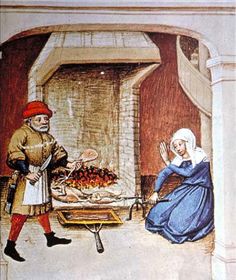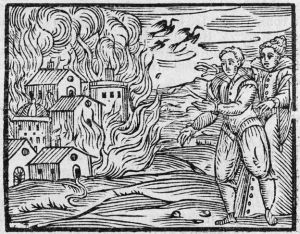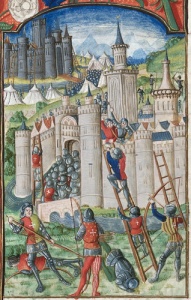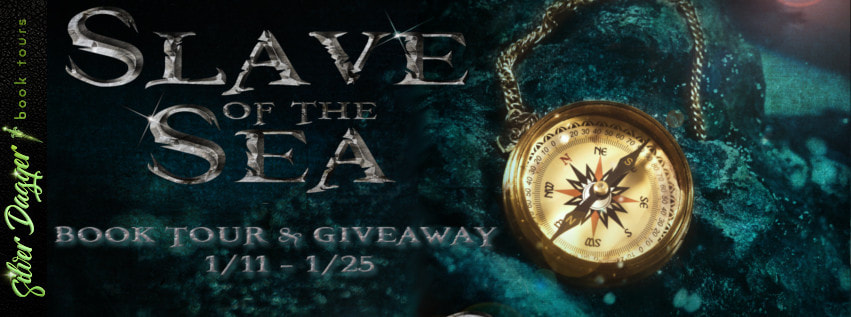Originally posted by Allison D. Reid:
 Fire was crucial to survival in the Middle Ages. With electricity and gas-powered devices still far into the future, open flame was the most common source of heat for cooking, industry, and protection against the cold. Fires were a bit more difficult to set in an era before matches, particularly if everything was wet. Fire-steels, flint, or pyrite (struck against iron to produce a spark) might be carried in a leather pouch along with tinder. Tinder could be dried brush, straw, birch bark, rotten wood, pine needles, wood shavings, small twigs, or char-cloth. Char-cloth was made by briefly catching a bit of clean linen on fire, then putting the fire out. The resulting bit of blackened fiber could be saved for later and easily caught fire. Once a fire had been successfully lit, the resulting coals were protected with fire covers or other means. It was more convenient to revive a fire from still-hot coals than to start one from scratch.
Fire was crucial to survival in the Middle Ages. With electricity and gas-powered devices still far into the future, open flame was the most common source of heat for cooking, industry, and protection against the cold. Fires were a bit more difficult to set in an era before matches, particularly if everything was wet. Fire-steels, flint, or pyrite (struck against iron to produce a spark) might be carried in a leather pouch along with tinder. Tinder could be dried brush, straw, birch bark, rotten wood, pine needles, wood shavings, small twigs, or char-cloth. Char-cloth was made by briefly catching a bit of clean linen on fire, then putting the fire out. The resulting bit of blackened fiber could be saved for later and easily caught fire. Once a fire had been successfully lit, the resulting coals were protected with fire covers or other means. It was more convenient to revive a fire from still-hot coals than to start one from scratch. As much as fire was a necessity to life, it was also a significant hazard in the medieval world. Stone and brick were prohibitively expensive building materials for the average person. Most buildings were made of wattle and daub with thatch roofs, and straw beds were often pulled close to hearth fires—all of these materials burned quickly once lit. In cities, the buildings were also built very close together, so if one building went up in flames, those near it would likely burn down as well. Many towns throughout Europe were at one point or other devastated by fire, whether by lit by accident, invaders, or even lightning. After 1213, London forbade thatch roofing in favor of shingles and tile, though other towns were slow to do the same.
As much as fire was a necessity to life, it was also a significant hazard in the medieval world. Stone and brick were prohibitively expensive building materials for the average person. Most buildings were made of wattle and daub with thatch roofs, and straw beds were often pulled close to hearth fires—all of these materials burned quickly once lit. In cities, the buildings were also built very close together, so if one building went up in flames, those near it would likely burn down as well. Many towns throughout Europe were at one point or other devastated by fire, whether by lit by accident, invaders, or even lightning. After 1213, London forbade thatch roofing in favor of shingles and tile, though other towns were slow to do the same.Cook houses and kitchens were sometimes built separate from other structures because they were such a common fire hazard. Brewers and barbers were tightly regulated for the same reason. They were all required to have their buildings whitewashed and plastered, both inside and out. Fires posed not only a threat to people and livestock, but to the longevity of the community if large food stores and other structures or supplies vital to survival were destroyed.
Imagine trying to fight a large fire with no hydrants, hoses, firetrucks, extinguishers, or any other modern equipment. In some cities access to water was already at a premium, and even with a large water source close by, there was no fast delivery system. Firefighting equipment of the day was buckets of water, firehooks to pull down thatch and compromised buildings, and lots of manpower. Each home was required to have a full container of water ready and waiting outside the front door, and every citizen was obligated to assist when a fire broke out.
 While stone buildings were safer, they were not impervious to fire, and even castles could be destroyed by it. Starting fires was often a tactic used by those laying siege to a castle or keep. Catapults could fling flaming objects over the stone walls in the hopes of catching something flammable on the other side. Once started, such fires were very difficult if not impossible to extinguish.
While stone buildings were safer, they were not impervious to fire, and even castles could be destroyed by it. Starting fires was often a tactic used by those laying siege to a castle or keep. Catapults could fling flaming objects over the stone walls in the hopes of catching something flammable on the other side. Once started, such fires were very difficult if not impossible to extinguish.On a personal note, I once visited a still-habited castle in Germany (sadly, I cannot remember its name) which burned in modern times much as structures would have burned in the medieval era. A fire was started on a cold winter night when embers from an untended fireplace lit a rug on fire. There were no hydrants or sprinkler systems—the firemen had to draw water from the river below the castle. But it was so uncharacteristically cold that the water was freezing in the hoses on the way up. Like ancient times, citizens were called upon to try to save the castle by bucket-brigade.
I remember seeing aerial photographs immortalized on informational plaques at the site, showing the sections that had burned. The original walls remained standing upright, but everything inside of them was gone, right down to the bare earth below. The owners had spent many years after (along with a small fortune) restoring the castle, though countless irreplaceable pieces of history had been lost forever.
It has been close to 30 years since I visited that place on a leisurely afternoon, and enjoyed piece of Black Forest cake in the café just below it. But it obviously made a strong impression on me, as sights and tales of fires would have made an even stronger impression on those so vulnerable to them in the medieval era. Such events were in fact one of the ways medieval people marked the passage of time before watches and calendars were commonplace items. Everyone would remember the year the river flooded, or lightning hit the church steeple…or the local castle burned to the ground on a frigid, winter night.
Want to know more about the Middle Ages? Check out the Medieval Monday Index for additional topics.


No comments:
Post a Comment